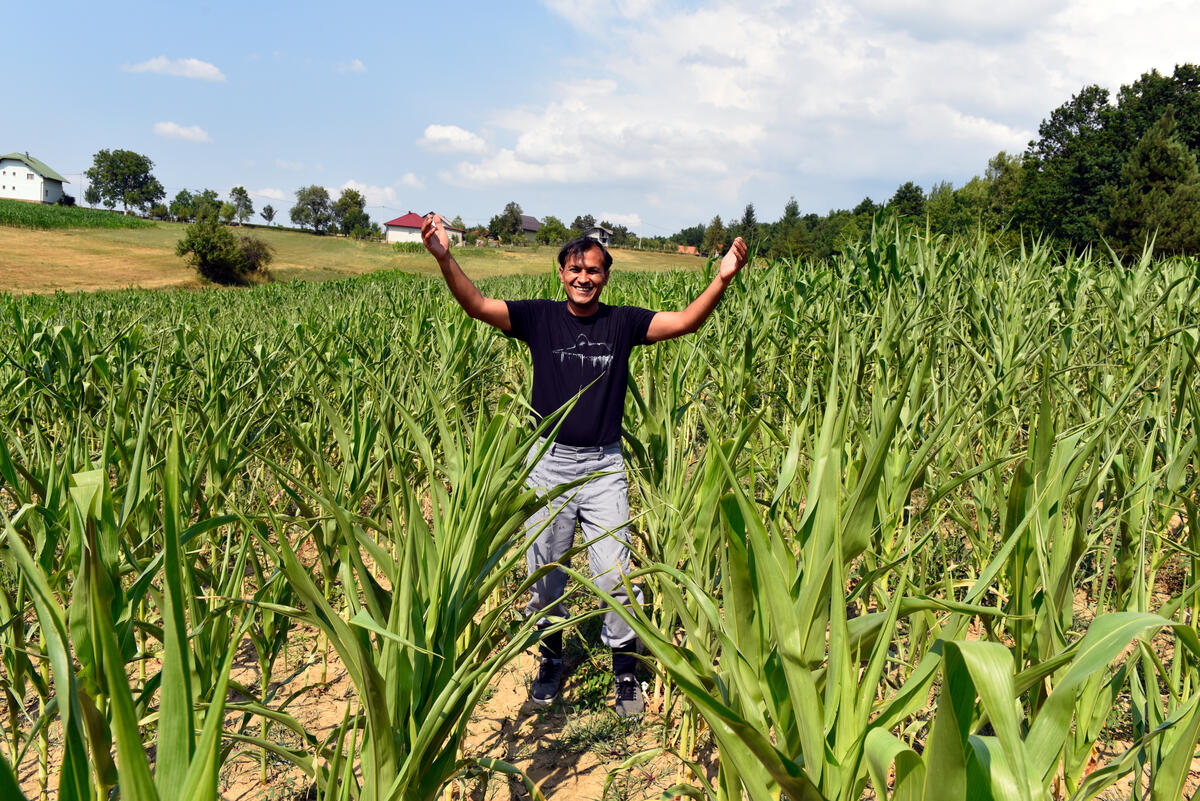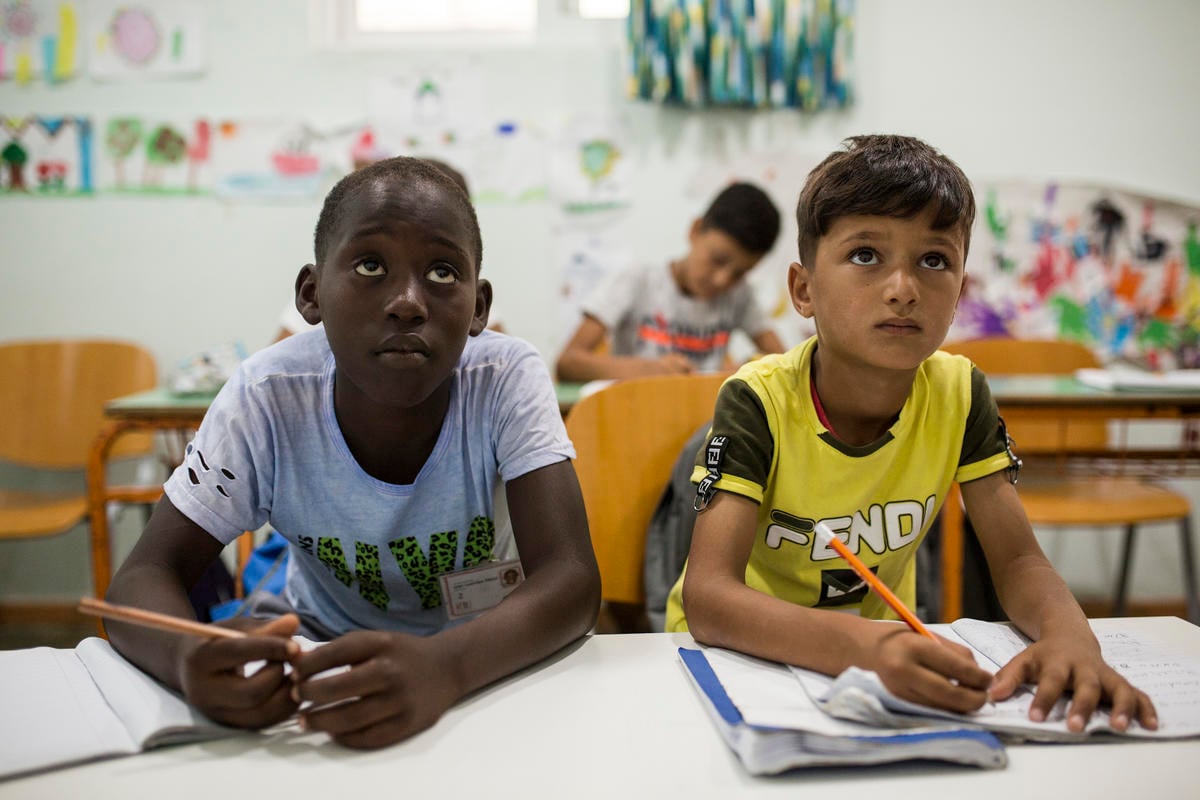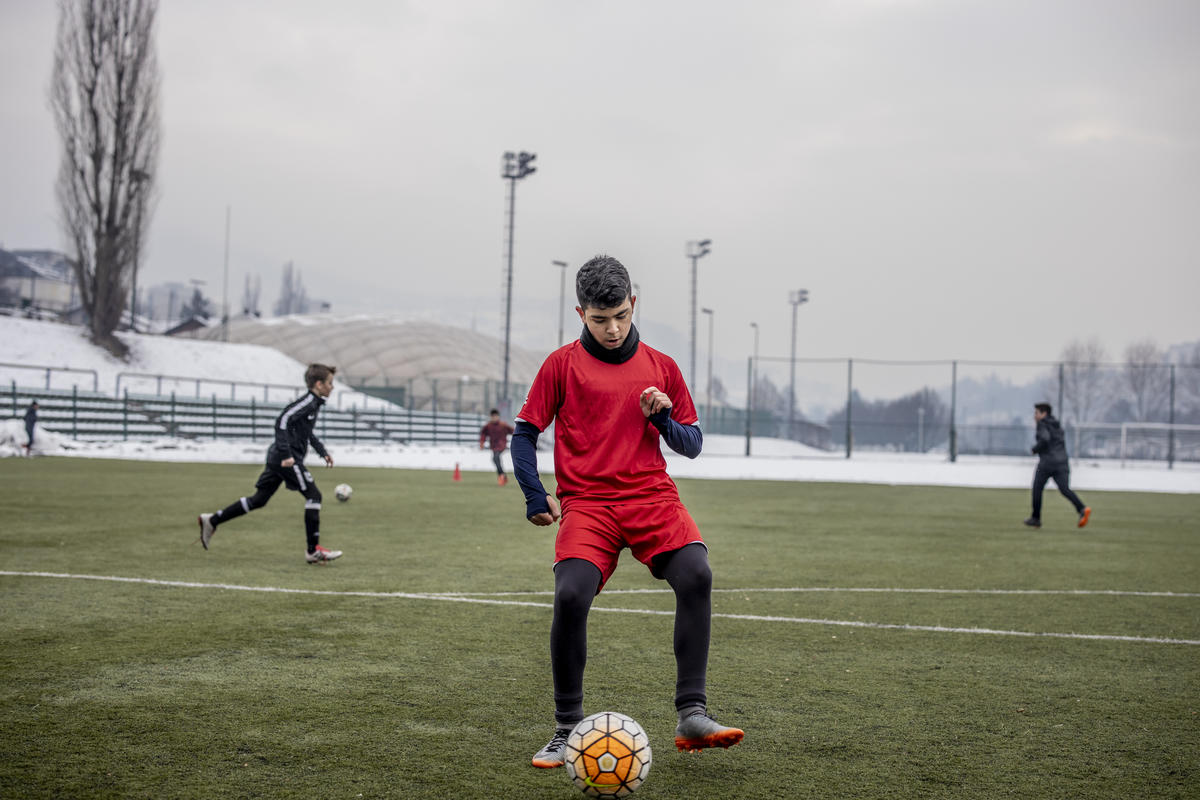UNHCR identifies key target areas for Bosnia return
UNHCR identifies key target areas for Bosnia return
The U.N. High Commissioner for Refugees on Thursday identified 18 key target areas in Bosnia-Herzegovina for a proposed international reconstruction effort that could help up to 165,000 people return to their war-damaged homes this year. The programme would repair more than 29,000 homes and cost an estimated $183 million.
High Commissioner Sadako Ogata, addressing the Mid-Term Review Conference of the Peace Implementation Council in Florence, Italy, also warned that there has been little progress in finding solutions for the 2 million people uprooted during the war.
"The figures say it all: to date, only 70,000 refugees and displaced persons have gone back home," she said.
"The main problem is that a fundamental aspect, if not objective, of the war remains largely unresolved. Some leaders are still trying to pursue in peace the goals they pursued in war. While we want to assist people wishing to return to their homes of origin, which will also help to bring the country back together again, they want ethnic division to prevail."
Ogata called for the "resolve of the international community" to make the parties abide by their commitments under the Dayton peace agreement to create the right conditions for return.
"Many people will not come back in a climate of political separatism and confrontation, if they do not feel safe or cannot move freely," she said. "I would also call on the international community to speed up the reconstruction effort, which has had a rather slow start. This too affects the prospects for and pace of return."
Elaborating on the need for return and reconstruction, Ogata announced that UNHCR will continue to pursue return to areas where people are part of the ethnic majority and where destruction - not security - is the major obstacle. She noted that UNHCR's shelter project - a drop in the ocean compared to the needs in Bosnia-Herzegovina - is in full operation.
"More importantly, however, we have, in collaboration with the local authorities, identified 18 key target areas for return and reconstruction," she said. "A concentrated effort in the coming weeks and months could lead to the return of 165,000 people to their homes. This will not only help these people, but should also start breaking the vicious cycle of house occupation which is a major practical impediment for returns as well as a source of tension."
She emphasized, however, that the reconstruction work would require the involvement of "all other actors, both bilateral and multilateral."
A report detailing the programme said UNHCR estimates that the people could return to the areas "if adequate shelter is available, along with a minimum operational infrastructure such as electricity, water supply and health and education facilities." Ogata said the proposal would be the topic of further discussions between UNHCR, interested donors and other organizations in the near future in Sarajevo.
The targeted areas, numbers of houses and buildings needing work, and numbers of potential beneficiaries are: "Anvil" region of Republika Srpska, 8,000 homes for 50,000 people; Travnik (six villages), 960 homes for 4,800 people; Kiseljak, 1,200 homes for 4,800 people; Busovaca, 201 homes for 845 people; Fojnica, awaiting figures; Sarajevo and suburbs, 11,000 homes for 55,000 people; Kupres, 912 homes for 4,800 people; Livno, 180 homes for 1,800 people; Glamoc, 120 homes for 2,000 people; Konjic, 180 homes for 1,800 people; Mostar East, 1,296 homes for 7,200 people; Jablanica, 108 homes for 1,800 people; Bihac area, awaiting figures; Celic, 204 homes for 1,000 people; Kalessija, 114 homes for 675 people; Teocak, 576 homes for 2,304 people, Zvornik/Sapna, 488 homes for 1,800 people; and Odzak, 1,000 homes for 5,000 people.
While promoting returns to majority areas, Ogata said UNHCR would also continue its efforts to help people wanting to go back to areas where they are in the minority. "This is the real meaning of Annex 7 (of the Dayton peace agreement)," she said. "It is also the most difficult task."
She noted that UNHCR continues to face repeated obstructions to organized group visits, particularly from Serb and Croat authorities. An average of eight out of 10 such visits have been deliberately blocked.
UNHCR's efforts to set up bus routes promoting cross-boundary visits have also faced disruption, but she vowed to continue the service and to open new routes in coming weeks. "We must try to carefully lower the wall of fear and mistrust, while we should not accept deliberate obstruction," she said. "Why is it that even the weak and elderly have to suffer in collective centres and are prevented from visiting their homes?"
Ogata said she was not yet in a position to recommend the lifting of temporary protection for hundreds of thousands of Bosnian refugees currently in other countries of Europe. She cited the lack of an effective human rights monitoring mechanism, problems with amnesty laws and continuing obstacles to freedom of movement.
"Although in the first six months of peace we have seen a general improvement in the situation in Bosnia-Herzegovina, Annex 7 (of the Dayton peace agreement, on the return of refugees) today remains a promise more than a reality," Ogata concluded. "UNHCR has a strategy, a plan and the determination to implement it. But without more political will from the parties and the unequivocal resolve from the international community, we cannot succeed."








